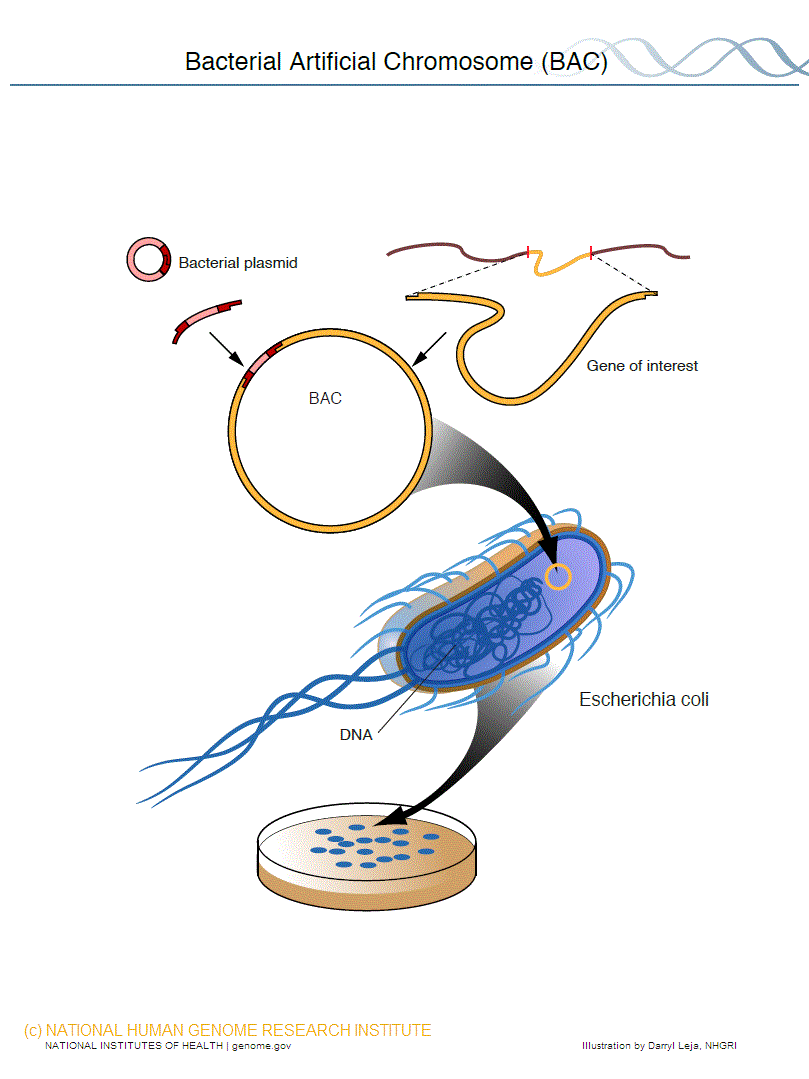Bacterial artificial chromosome
A vector used to clone DNA fragments (100- to 300-kb insert size; average, 150 kb) in Escherichia coli cells. Based on naturally occurring F-factor plasmid found in the bacterium E. coli. [7]
Bacterial Artificial Chromosomes (BAC) have been developed to hold much larger pieces of DNA than a plasmid can.[8] BAC vectors were originally created F’ plasmid present in few bacterial plamids. it was found through studies that F’ plasmid were able hold up to a million basepairs of DNA from nonself bacteria. In 1992, Hiroaki Shizuya took the parts of F’ that were important, cleaned it up, and turned it into a vector. [8]
BAC vectors are able to hold up to 350 kb of DNA and have all of the tools that a vector needs to work properly, like replication origins, antibiotic resistance genes, and convenient places where clone DNA can insert itself.[8] By these vector that can hold larger pieces of DNA, the number of clones required to cover the human could be reduced drastically from 1.8 billion to about 50 million.
Researchers have modified BAC vectors to become more convenient to use and more useful in specialized situations. [8] In addition to the antibiotic resistance gene that was added to identify transfected bacteria, a gene was added that enabled the bacteria to turn the colourless substance X-gal/IPTG blue. [8] So it is possible to tell not only if a bacteria had been transfected (meaning incorporated into the cell), but also if the bacteria was transfected with the vector containing insert DNA or just the vector alone (remembering that if the vector has properly incorporated the clone DNA, it will have lost its ability to change X-gal/IPTG blue). [8] Modifications to BAC vectors make them more specialized.[8]
Few advantages:
- The creation of BAC vectors has allowed researchers to do many things that they could not do before and do them more quickly and more easily. [8]
- BACs have allowed researchers to look at microbial DNA without having to actually grow the organisms[8]
- BAC vectors are also useful for studying pathogens, and are helpful in the development of vaccines. [8] BAC vectors are playing a tremendous role in discovering new and powerful antibiotics in the environment.
- Discovering enzymes that are able to help clean up oil spills or help farmers breed healthier farm animals or even process radioactive waste are just a few examples of what Bacterial Artificial Chromosomes can do. [8]
